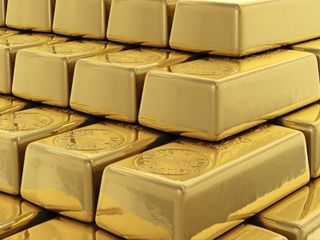 Gold’s rebound is gathering pace as the precious metal posts strong gains in the wake of minutes from the Federal Reserve’s latest board meeting, which some suggest points to a reduced chance that interest rates will rise in September.
Gold’s rebound is gathering pace as the precious metal posts strong gains in the wake of minutes from the Federal Reserve’s latest board meeting, which some suggest points to a reduced chance that interest rates will rise in September.
Reuters reported yesterday that gold bugs pushed the metal to a one-month high of $1,132 before it eased back, with traders noting “resistance” at $1,135. On Thursday morning spot gold rose further and breached $1,140 an ounce, before again falling back slightly.
The Financial Times says the minutes from the Federal Open Market Committee’s July meeting “seemed to cast doubt on the possibility of a hike in official borrowing costs” in September. While most members judged that “conditions were approaching that point” where a rise would be justified, they also expressed concern over “spillovers” from slower growth in China, the stronger US dollar and the ongoing weakness in the labour market.
Gold has particularly benefitted from the uncertainty on China, which has recently moved to dramatically devalue its currency in a shock move that some argued was aimed at boosting its waning export market. Concerns over growth have also left its stock markets in the grip of extreme volatility and led global investors to rush to traditional safe havens – such as gold – to hedge against the risks of a wider ripple effect.
The metal was also boosted this week by a change in tone from analysts at HSBC, who had last month reduced price forecasts. Analysts now predict prices will rise significantly by the end of the year to above $1,200 an ounce. According to CNBC a report from the bank cited a number of reasons for a more bullish outlook, including that an interest rate rise may already be “priced in”. Historically trends suggest a hike in borrowing costs could hit the dollar, which tends to move inverse to gold, and that recent lower prices could spur demand.
Against such forecasts many continue to believe an increase in rates could reduce the attraction of non-yielding assets such as gold, while demand from big markets such as China was actually falling even before the effects of the currency devaluation, which will increase import prices, is counted.
The Week
Leave a Reply
You must be logged in to post a comment.